Posts Tagged ‘Immigration’
Grounded in God’s Vision: Q&A with Aerlande Wontamo
In January 2023, we welcomed Aerlande Wontamo as World Relief’s new Senior Vice President of U.S. Programs. She recently sat down with us to share how her professional expertise, personal experience and strong sense of calling have uniquely prepared her for this role.
We hope you enjoy hearing from Aerlande as much as we did!
Can you start by telling us a little about yourself and your story?
I’m originally from Ethiopia but grew up in Nairobi, Kenya. Due to a political crisis, my father went to Kenya as a refugee. A little over two years later, my two siblings, mother and I followed. The separation at a young age and understanding what that meant for my mother as the sole breadwinner who was managing three young kids made a profound impact on me.
In Nairobi, my parents had other refugees over for lunch and dinner every Sunday after church. It wasn’t so much that they needed a meal, but that they needed to not think about being a refugee for one afternoon. The integral role of the church and the impact those interactions have on people was something I deeply understood and drew me to World Relief.
You have almost 15 years of experience in refugee resettlement. What have you learned along the way?
We set people up well when we walk alongside them in intentional community and provide wraparound services. However, one of the biggest red flags I’ve seen over the years is the mentality of saviorism. It’s crucial to acknowledge that while refugees may carry the label “refugee,” it doesn’t encompass their entire identity. They bring a multitude of skills and experiences, and our lives are often enriched through our interactions with them.
What do you think sets World Relief apart?
At World Relief, we look at what we do not just as good work, but as a space we are called to be in as Jesus would be. Grounding ourselves in our biblical mission helps us understand that we’re part of God’s big picture and vision.
An important question I like to ask is, “Where does your joy come from, or what grounds you?” If it is in accomplishments like getting a grant or opening an office, that’s very fleeting. I find deep joy in being called to this work because it is truly a privilege to be part of God’s work.
We talk a lot about building welcoming communities. Why is that important?
That’s really a personal value for me — as a human, I need community to thrive. But community is not birthed out of just being in a space. There’s an intentional, relational investment.
I think about a client I had who was a single mother with three kids under seven. We matched her with two volunteers who, every Saturday, would take her kids to dance class because they had so much energy. But once their six months of volunteering ended, they continued to meet with her and became family, not because they needed to do things to help her be successful, but because they extended friendship to her and her daughters.
World Relief has been resettling refugees and serving immigrants since the 1970s, but you’re the first SVP of U.S. Programs who has lived experience as a refugee. How does that shape the way you lead?
I have grown up in this system in terms of both a lived experience and a professional career, and this is deeply embedded in my DNA. Growing up in a church filled with a transient refugee community informs who I am and how I hold space.
I’m a huge believer in diversity and all aspects of it. I think about women’s representation, people of color, immigrant voices, people with lived experiences. There are so many categories that we can pull from, but we must come from the mindset of, “this allows us to build a greater group,” versus thinking, “now I have to check off this item.” As an organization, it takes boldness to move in that direction, and there’s so much value that can come out of it.
Where do you see World Relief’s U.S. programs headed in the next year?
I always say, “If not us, then who?” Programmatically we have resettled about 9.3% of the refugees arriving in the U.S. every year. If 125,000 refugees come in this year, we are looking at resettling around 13,000. Growth is integral — we must look at investing in new ways of supporting churches and communities who want to walk alongside refugees and other immigrants and in building more sustainable models that set up our offices to be successful.
Now to end on a fun one — do you have any hidden talents?
That’s the hardest question of all! I enjoy a good baking challenge. Recently, I made French macarons, not sure if it’s a talent yet — but maybe one day!
Want to learn more about how World Relief’s U.S. Programs are creating change in the lives of refugees, other immigrants and the communities that welcome them around the country?
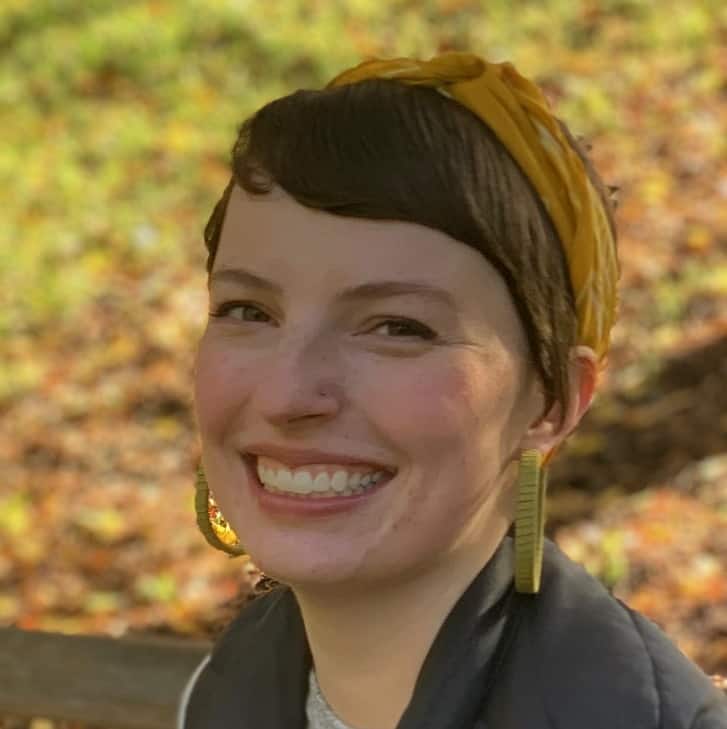
Meghan Gallagher is a Seattle-based freelance content writer and strategist. She has a B.S. in Marketing Management and a background in digital marketing for healthcare, nonprofit, and higher education organizations. When she’s not writing, you can find her working as a local bookseller and enjoying all the Seattle area has to offer.
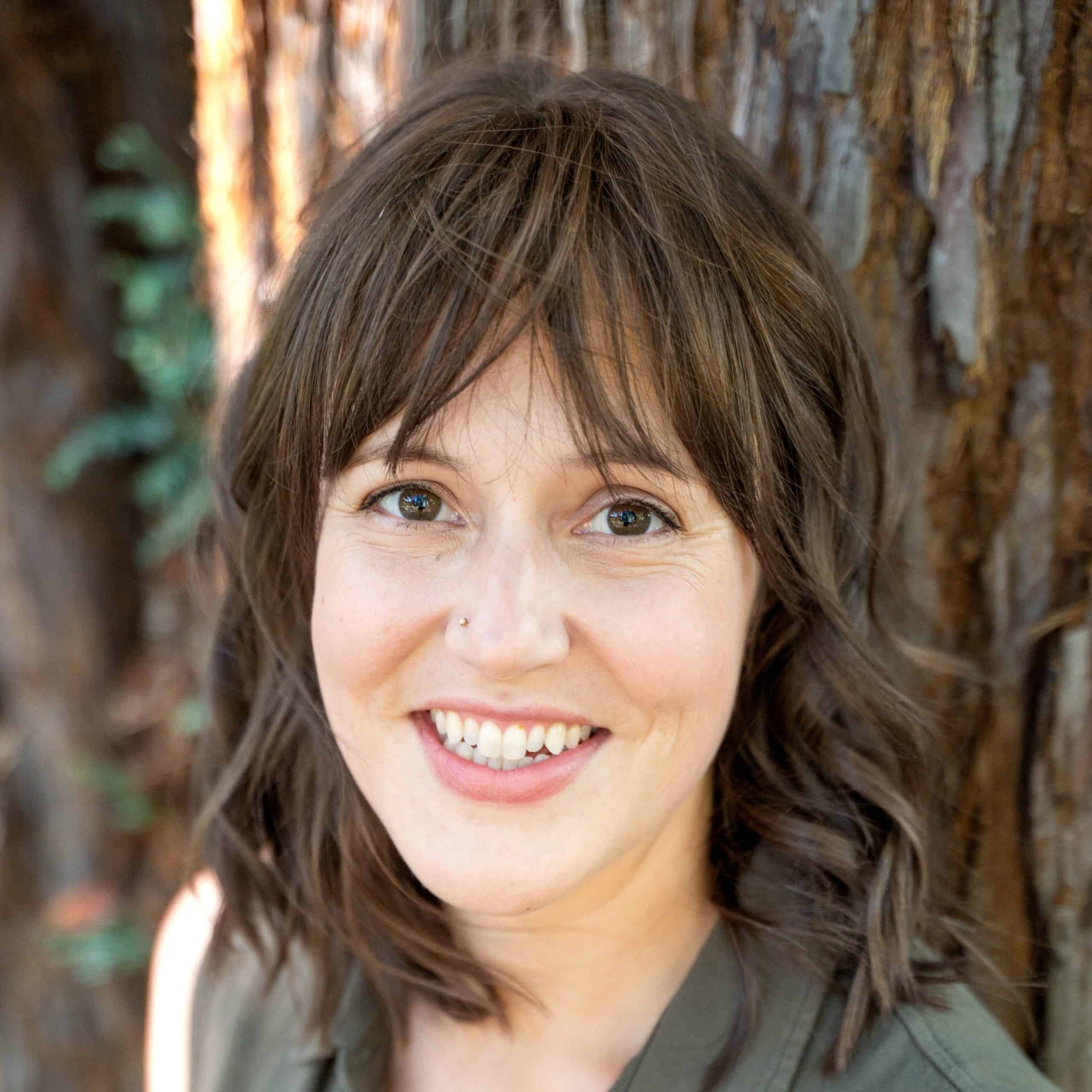
Kelly Hill is the Senior Content Writer at World Relief. She previously served as Volunteer Services Manager at World Relief Triad in North Carolina. With a background in International and Intercultural Communication, she is passionate about the power of story to connect people of diverse experiences.
Left in Limbo – The State of the Afghan Community after the U.S. Military Withdrawal
On August 15th, 2021, years of preparation came to a close as the United States military began to withdraw from Afghanistan. Intelligence specialists estimated that it would take a minimum of six months for Kabul to be captured by the Taliban. It took them 11 days. Thus began two weeks of chaos.
On August 31st, the U.S. declared its withdrawal complete and closed its embassy in Kabul. As part of its withdrawal, the U.S. military helped evacuate 78,000 Afghans out of Afghanistan. This rushed and dangerous evacuation left tens of thousands of Afghans behind and tore families apart. Today, the Afghan community in and out of the U.S. is forced to deal with long and confusing procedures. All they want is to see their family and the guarantee of a stable future, but this is much easier said than done.
What has been going on with the Afghan community since the withdrawal? Here is an overview and timeline of events so we can better understand and advocate for the Afghan community.
U.S. Bureaucracy Struggles to Keep Up Post-Withdrawal
On September 3rd, the Department of Homeland Security (DHS) announced “Operation Allies Welcome.” This new program was meant to resettle and support Afghans involved in the large-scale evacuation effort. Due to this new operation, tens of thousands of fleeing Afghans were granted humanitarian parole.
What is humanitarian parole and how was it used in Afghanistan?
Humanitarian parole is a way for the government to protect foreign nationals in emergency situations. It serves as a rapid way to let someone stay in the United States and work there without going through the complicated bureaucracy of the immigration system. United States Citizenship and Immigration Services (USCIS), the organization responsible for managing immigration status, quickly granted parole to 74,500 of the 78,000 evacuating Afghans. Due to the chaotic and urgent nature of the situation, USCIS did not have many other options.
On average, humanitarian parole lasts two years. During this time, parolees cannot be deported, and they have the right to work. Once those two years are up, they are either sent back to their country, or USCIS can extend their parole. Since August 2021, thousands of Afghans have been stuck waiting, trying to rebuild their lives between this two-year status. They simply hope that they won’t be sent back.
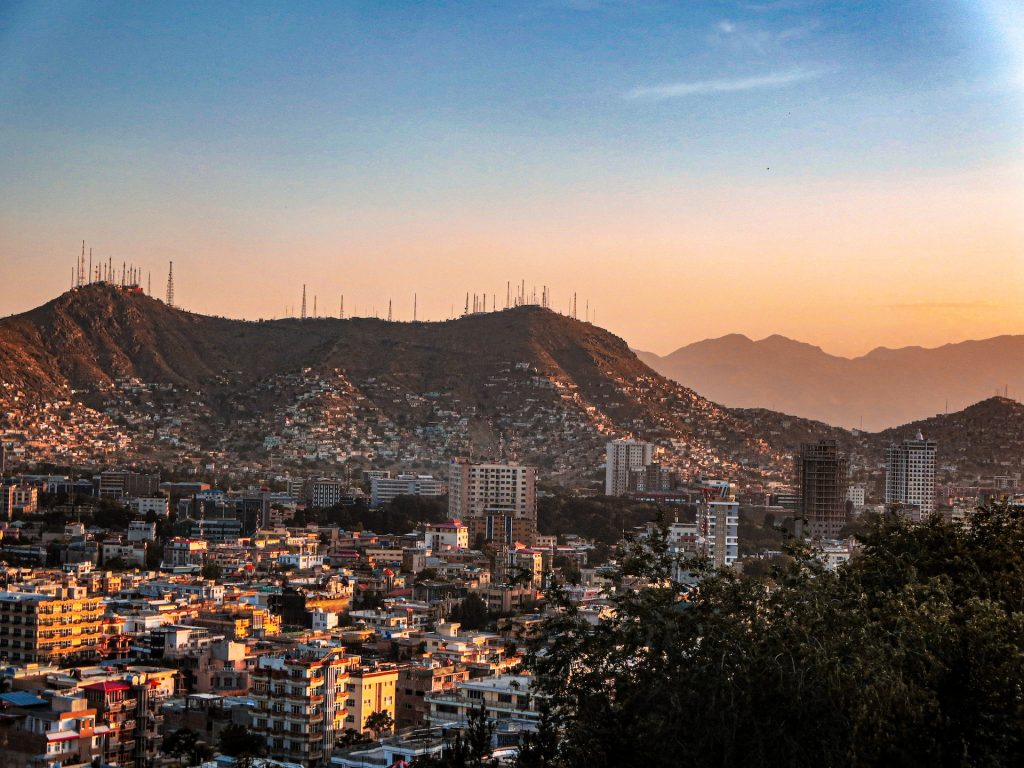
How did USCIS manage the crisis after the withdrawal?
Once the Taliban took back control of Kabul, USCIS began receiving an overwhelming amount of parole requests.
USCIS was not prepared to process Afghans that weren’t included in the initial evacuations. Those that were left behind had to wait. In September, their calls for help were put on hold. It took USCIS four months to adapt its processing procedures.
From January 2020, as the U.S. government began preparing its evacuation, to April 6th, 2022, 8 months after the withdrawal, USCIS received 44,785 total applications for parole. They processed 2,633. They accepted only 114. In total, because of the $575 fee attached to the application, USCIS received over $19 million.
As of 2023, this number of applicants has risen to 49,000 with a total of 410 approved. To make matters worse, about 70% of Afghans applying for parole are still within the country. The U.S. government no longer grants parole to those at the border– they must be outside of the United States. Every extra day they wait for a decision is a day they live under the threat of death.
Special Immigrant Visas
Certain Afghans can apply for Special Immigrant Visas (SIVs). An SIV is a special visa given to Afghans who put themselves under a security risk to interpret or otherwise be employed by the U.S. military. With this visa, Afghans can seek permanent residence and citizenship in America. Often, Afghans who qualify for SIVs are in dangerous situations. The Taliban views them as traitors and many SIV-eligible Afghans have been killed or are threatened by the Taliban.
The Problem with SIVs
The SIV program is in as much disarray as the parole program. Even before the U.S. withdrawal, there was a backlog of approximately 18,000 SIV applications. As the list kept growing, the understaffed Afghan SIV program couldn’t keep up. Internal reports found that it takes roughly 734 days to process an SIV application as of 2022— just over two years.
The latest report from the Department of Homeland Security found that there were about 74,000 applicants waiting for a decision on their SIV status. Even worse, these applicants are in the very early stages of the application process. They are waiting for the Afghan Chief of Mission to approve their papers and confirm that they did work with the U.S. military– step number four of an 11-stage process.
Additionally, there are only 17,000 SIVs left to give out. Like other immigrant visa programs, the State Department puts a cap on the number of visas it can give out. Once USCIS reaches this cap, there is no way for additional Afghan allies to benefit from this program. However, the State Department can raise the cap, which it has previously done. In December, the State Department added 4,000 visas to the total. Nevertheless, we are still far away from addressing the tens of thousands of Afghan allies.
SIV Applicants Face Another Issue
The SIV application process holds another hurdle. On August 31, 2021, the U.S. embassy in Kabul suspended operations. Therefore, SIV applicants are forced to leave the country; after a certain point in the process, they must show up at a U.S. embassy in person for an interview. Leaving Afghanistan can prove to be quite difficult, especially for an SIV applicant who may already be threatened by the Taliban.
While many SIV applicants were paroled out of Afghanistan during the initial evacuation, many were left behind. So many allies who put their lives in danger were simply abandoned.
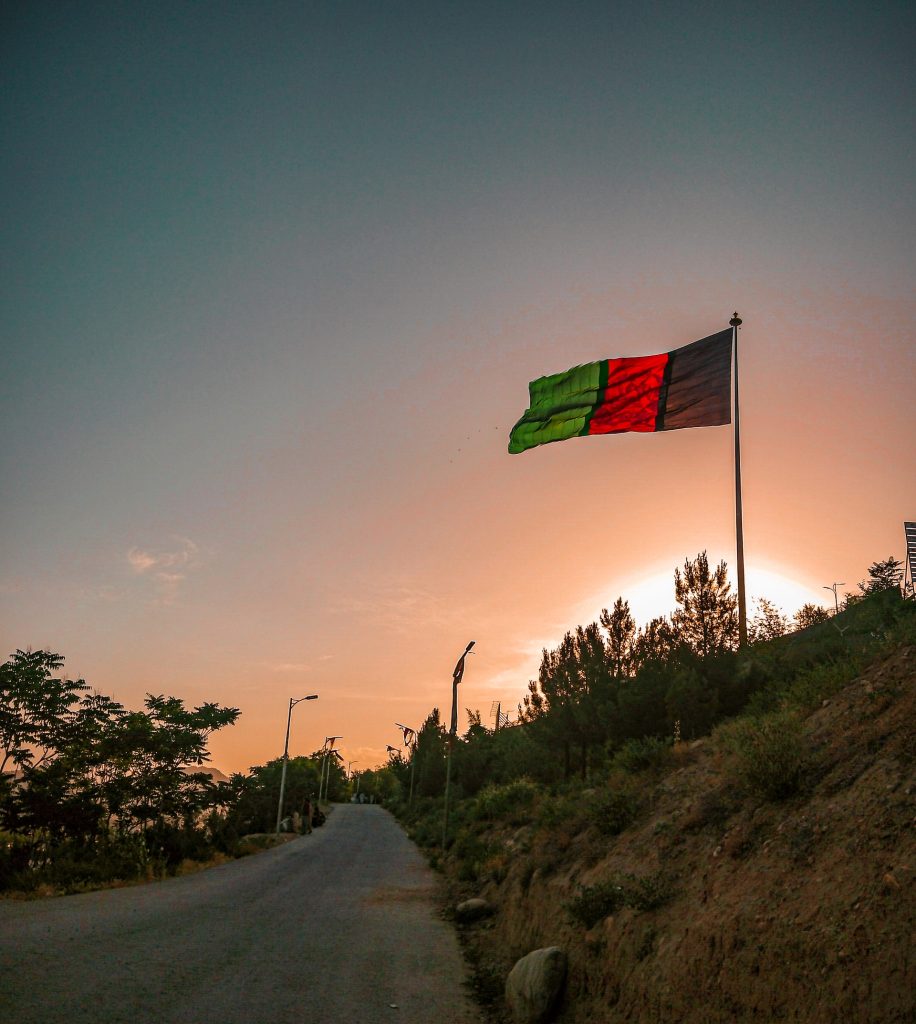
Afghanistan Becomes Eligible for Temporary Protected Status
In March 2022, USCIS announced the designation of Afghanistan as TPS-eligible. Temporary protected status (TPS) is similar to humanitarian parole. When a country is facing conflict that would make it unsafe for its citizens to return, the secretary of the Department of Homeland country can declare that country and its citizens eligible for TPS.
Then, USCIS hears cases from different eligible individuals and grants them TPS. It protects them from deportation for 18 months and grants them authorization to work in the United States. It’s very common for USCIS to extend TPS, just as it can extend parole. However, just like parole, there is no path to citizenship or permanent residence in the United States. It’s another short-term solution.
It’s important to note that TPS only applies to foreign nationals who are present in the United States. Afghans outside of the U.S. can’t apply for TPS. Only those in the country before March 15, 2022 – the date Afghanistan became eligible – can receive this status. While great for the Afghan community in the U.S., those left behind can’t benefit. Their only options are to apply for backlogged parole, SIV status, or asylum.
Afghans can also have multiple statuses at the same time. The majority of Afghan TPS holders are also parolees. While it may seem redundant to be a parolee and TPS holder at the same time, it grants Afghans extra protection from deportation.
Family Reunification
In January 2022, the State Department announced a new form that would allow Afghans to apply for family reunification. There are procedures for SIV recipients to have their families join them, but these channels are also significantly backlogged. However, for those granted humanitarian parole or TPS, there was no way to reunite with their families until January – unless their family members were also individually granted an immigration status. This new form allows the applicant to reunify with their spouse and unmarried children under 21.
Regardless, Afghans must once again face the bureaucracy of our immigration system just to see their family again. Who knows how long it could take, or what could happen in the meantime?
Extending Humanitarian Parole
This June, USICS announced a new program to let Afghans apply for re-parole, extending their humanitarian parole and letting them live in the U.S. for another 2 years. They’re actively examining each case and seeing if Afghans are eligible for re-parole. This time, Afghans are also exempt from the $575 fee. While this is a good step in assuring that Afghans can stay in the U.S., it’s another short-term solution.
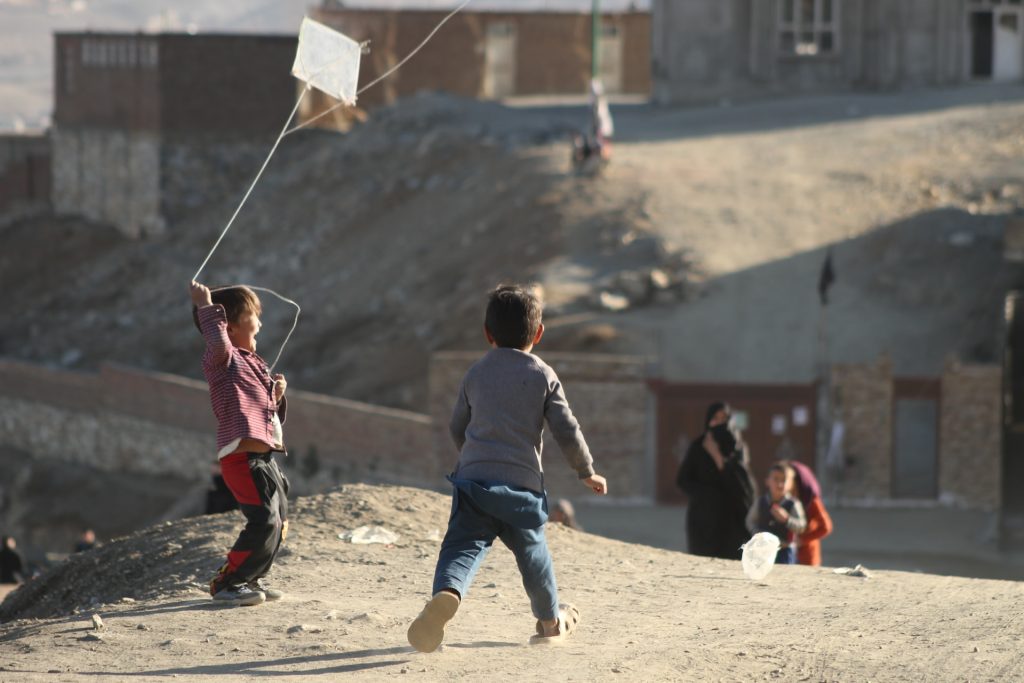
What Does the Situation Look Like for the Afghan Community Now?
There are Afghans who have been U.S. citizens for years or are already lawful permanent residents. They came to the U.S. long before the military withdrew from Afghanistan. Their family and loved ones are stuck waiting for a decision on their parole or SIV case and fear for their lives.
There are Afghans who were granted parole and TPS. They just began their application to renew their parole status for another two years. While they can live and work in the U.S., they have no guarantee of what their future will look like in two years— they have no path to citizenship. Those who qualify for SIV or asylum brave our immigration system and its eternal wait times. They’ve applied for the new family reunification program and wait to see if they’ll be reunited with their families back home.
As the U.S. government rolls out short-term after short-term solution, Afghans have no other choice but to wait—in limbo.
Hear the stories of Sayed and Hashemi, two Afghans living in Spokane.

Antoine Herrbach is a 2023 Summer Intern for World Relief. He is a Senior at Gonzaga University, studying Political Science, History, and Economics.
A Prayer for Refugees
On June 14, a ship carrying migrants bound for Europe capsized in the Mediterranean Sea. Despite search and rescue efforts, hundreds are feared dead.
Even as we celebrate the strength and resilience of refugees this World Refugee Day, we lament that, for so many people seeking safety and a more hopeful future in a new land, the route is often marked by unnecessary hardship and trauma.
At World Relief, we are mourning with those who have lost loved ones in this tragedy, and we pray that God would give us the courage to not look away.
Will you join us in praying for refugees and those seeking safety around the world?
Father, I still my heart and mind to focus on you. Speak, your child is listening.
(Pause in silence and prayer)
Read: “The Lord your God is supreme over all gods and over all powers. He is great and mighty, and he is to be obeyed. He does not show partiality, and he does not accept bribes. He makes sure that orphans and widows are treated fairly; he loves the foreigners who live with our people, and gives them food and clothes. So then, show love for those foreigners, because you were once foreigners in Egypt.” — Deuteronomy 10: 17-19 (GNT)
How wonderful and powerful you are, Lord. Help me to reflect you and love like you.
(Pause in silence and prayer)
Today, I pray for those who are vulnerable and who may not be able to see your might and presence in their lives at this moment. I pray for those fleeing violence, wars and persecution; be their guide and comfort. For the millions of refugees around the world, waiting for justice and a new home.
(Pause in silence and prayer)
I pray for my city and community. May it be a place of safety, support and solace for those in distress.
(Pause in silence and prayer)
Lord, I think about our nation’s leaders and government. May they use their positions of power to work towards justice and righteousness.
(Pause in silence and prayer)
I pray for your church, that it would be a city on a hill, shining bright as a beacon for all who seek a new and better way.
(Pause in silence and prayer)
Lastly, I stand firm, covered with the armor of God, and pray against the work of the enemy, who comes to kill, steal and destroy.
(Pause in silence and prayer)
I offer this prayer to you and declare that yours is the kingdom and the power and the glory forever. Amen.
What is the Displacement Crisis?
Today, about 6 million people live in refugee camps. They’ve managed to flee from the risk of persecution in their home country, and now they are forced to wait. Often, conditions in camps are less than subpar. Access to water and healthcare is difficult, and refugees are reduced to living in tents for years — or even decades at a time. Entire families and generations have been born and grown up inside camps originally meant for temporary housing. It’s often difficult to obtain citizenship or work authorization, and millions of refugees are stuck in limbo, hoping for a chance at a new opportunity.
The latest figures from UNHCR, the United Nations Refugee Agency, show that there are about 103 million displaced people worldwide in over 134 countries. Projected figures estimate that the number of displaced people will grow to 117.2 million in 2023. What is displacement and how does it affect our communities? Here is an overview of what it means to be displaced, and why we should care.
There are many different categories of displaced people.
Let’s start with the different legal statuses of displaced people. You may have heard terms such as asylum-seeker, refugee, or internally displaced person. These different statuses each have a strict legal definition, and each is given different rights and protections.
What is an asylum-seeker?
An asylum-seeker is a person who has left their country of origin and is seeking protection in another country. However, they have not yet been legally recognized as a refugee and are waiting for a legal decision on their asylum claim. When it was founded, the United Nations declared that seeking asylum from persecution is a human right, and doing so is clearly outlined in the Universal Declaration of Human Rights. All people, no matter their origin, have a right to live in safety.
The latest figures show that roughly 4.6 million asylum-seekers are waiting for a decision on their asylum claims. In the United States, the asylum process can take from around 6 months to several years.
What is a refugee?
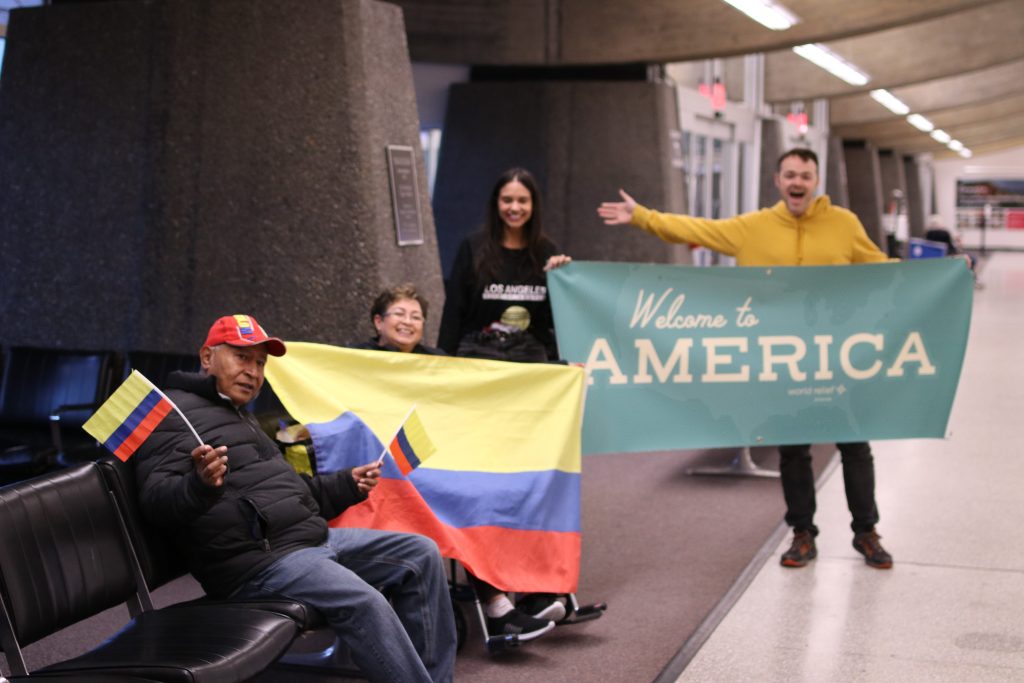
As of today, there are about 32.5 million refugees worldwide. The term “refugee” was defined by the 1951 Refugee Convention. Refugees are people fleeing conflict or persecution. They are unable or unwilling to return to their country of origin based on a fear of persecution based on five categories: race, religion, nationality, political opinion, or membership in a particular social group.
Once a person is granted refugee status, they are granted certain legal rights, again outlined in the 1951 Refugee Convention. For example, one key principle is the idea of non-refoulement. It ensures that states cannot send a refugee back to a country where they face serious threats to their human rights.
What is an internally displaced person?
Internally displaced peoples, or IDPs, are those who have been forced to leave their homes due to armed conflict, general violence, or human rights violations, yet have not crossed an international border. IDPs may not have the financial means to undertake such a journey. Many suffer from health conditions that render them unable to flee the country. Some IDPs are surrounded by conflict and stuck in a war zone.
IDPs face similar challenges to refugees and asylum-seekers, yet do not enjoy the same legal protections. They are often located in areas where aid organizations cannot reach them. Their national governments are responsible for their protection; yet these same governments may be unable to grant them protection or may simply refuse to do so.
While refugees most commonly make headlines, there are currently 70.1 million IDPs, more than twice the number of refugees.
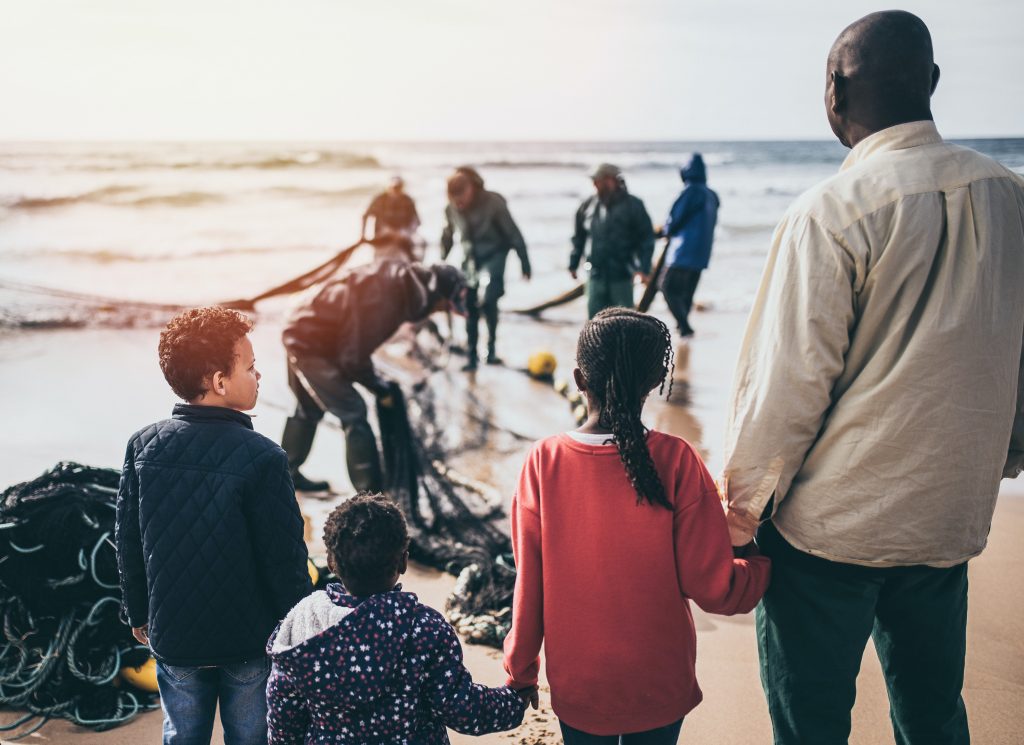
What is statelessness and how does it relate to displacement?
Statelessness can hinder freedom of movement, the ability to buy property, vote, open a bank account or even get married. Moreover, stateless people are excluded from government initiatives. Recently, many stateless people were left out of COVID-19 vaccinations or relief packages — they were considered invisible to governments.
Currently, there are around 700,000 Rohingya, an ethnic group which the state of Myanmar refuses to recognize and grant citizenship to. Rohingya are asylum-seekers and refugees like many others; yet they lack birth certificates, access to healthcare, and strict restrictions on their freedom of movement.
Other people in need of international protection
This category was created by UNHCR in 2022 and includes people who are outside of their country of origin, yet don’t qualify for typical refugee status. These people likely need international protection, especially protection against forced return, including access to basic services on a temporary or long-term basis. UNHCR estimates that there are about 5.3 million in need of other international protection.
How do countries address those left out of the refugee framework?
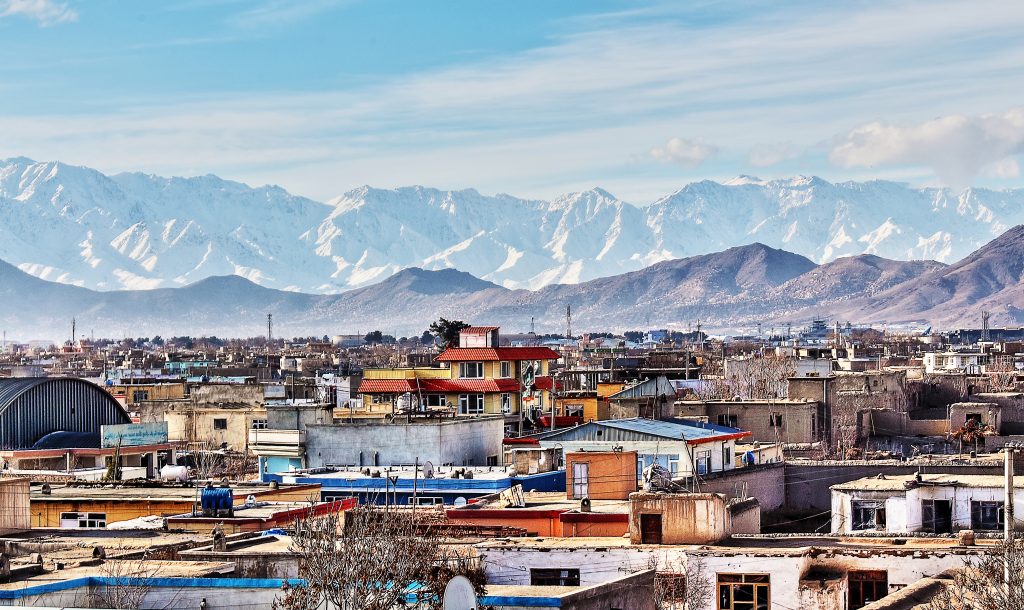
Modern displacement crises have put stress on the refugee framework, showing how its narrow definition, while important, can sometimes leave out equally vulnerable populations.
For example, the majority of displaced people in Venezuela and Ukraine do not qualify for refugee or asylum status, instead relying on temporary protection statuses or humanitarian parole – these statuses grant the recipient the right to live and work in a specific country, but only for a limited amount of time. However, countries can extend these statuses indefinitely.
The sudden withdrawal of U.S. troops from Afghanistan prompted the government to grant Afghans humanitarian parole to temporarily reside in the United States.
Addressing the displacement crisis means understanding its root causes.
Understanding the root causes of displacement can help us respond better to people’s protection and assistance needs. It helps us prevent crises which cause families to risk their lives in pursuit of safety. It ensures that today’s displaced will not be displaced again.
UNHCR splits factors leading to displacement into two major categories: drivers and triggers. Drivers are the underlying structural factors that combine, causing a crisis to erupt. For example, there may be:
- Environmental drivers, such as desertification, or climate change.
- Social drivers, such as limited education opportunities or inter-communal tensions.
- Political drivers, such as poor urban planning or corruption.
- Economic drivers, such as poverty, lack of access to markets, or lack of economic mobility.
Secondly, triggers are events precipitated by drivers that leave people little choice but to flee their homes. Armed attacks, natural disasters, or forced eviction are examples of triggers. Triggers themselves may not necessarily lead to displacement; however, their combination with various drivers create hostile and threatening situations. Triggers can also combine or occur in succession, creating a more complex situation.
Let’s examine a few situations around the world and why displacement is happening there.
Venezuela
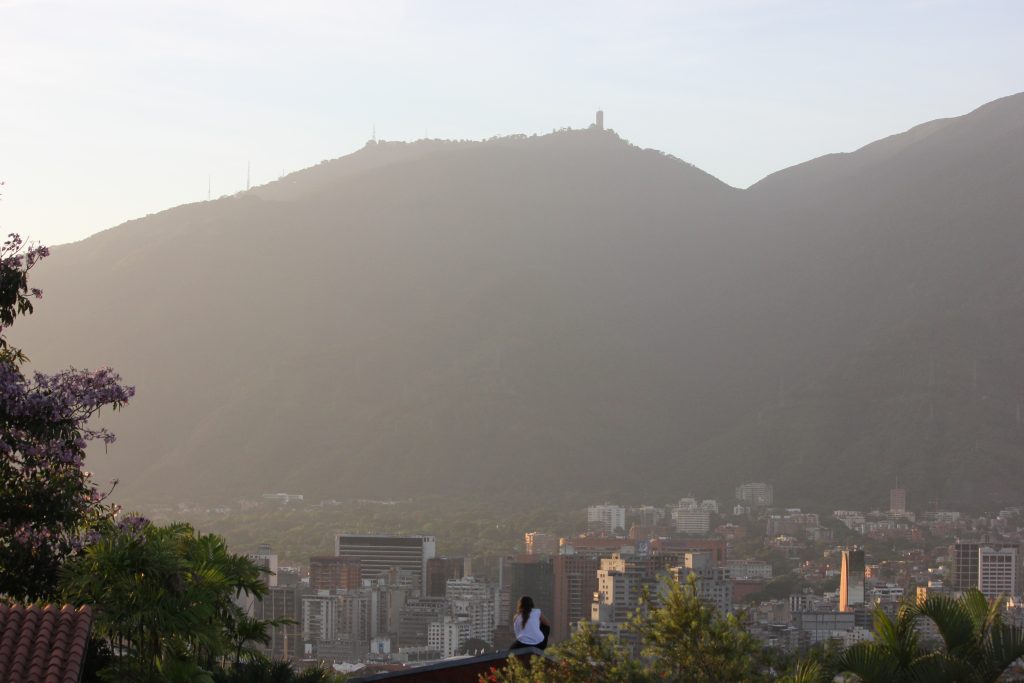
The displacement crisis in Venezuela can be traced back to the early 2010s, beginning with Hugo Chavez’s presidency. While rising oil prices enriched Venezuela and emboldened its economy, the lack of long-term economic planning became a main driver of future displacement. Today, Venezuela is marred by hyperinflation, and its population struggles to afford basic necessities. In 2018, inflation in Venezuela exceeded 1 million percent. Persistent economic sanctions have added to the already difficult situation in Venezuela, leading to many shortages of food and medical supplies.
Under Nicolas Maduro’s regime, the government began to crack down on anti-government demonstrations, resulting in many extrajudicial killings. In 2017, the UN reported over 5,287 killings by the Venezuelan National Police’s “Special Action Forces.” An additional UN report found that there were 1,569 killings in the first six months of 2019 alone. The Maduro regime has also made it exceptionally difficult for humanitarian agencies to operate within Venezuela, denying much aid to the starving population.
The COVID-19 Pandemic worsened health and safety conditions for the country, as Venezuela was not equipped to deal with the necessary health measures and lacked access to vaccinations or proper health services.
Half of the Venezuelan refugee and migrant population displaced around South America cannot afford three meals a day and lacks access to housing. Hundreds of thousands of Venezuelans remain without documentation or permission to stay in nearby countries, denying them access to basic rights.
Six years ago, Morella Perez-Suels left Venezuela to search for a better life in the U.S. Today, she serves as the Education Services Manager at World Relief Spokane, offering hospitality and education for refugees and migrants.
Unique Challenges in the Venezuelan Crisis
The Venezuelan displacement crisis is unique because very few displaced Venezuelans are refugees. Of the 7.13 million displaced, only 211,000 are registered refugees with the UNHCR. Approximately 1 million are asylum-seekers, primarily seeking protection in Peru and the United States. Since poverty and economic downturn are not enough to qualify for refugee status, migrants have fled to neighboring countries seeking temporary protective status and humanitarian parole.
Ukraine
The ongoing war between Russia and Ukraine has led to over 8 million refugees and migrants fleeing the country. There are approximately 17.6 million people in need of urgent humanitarian assistance, of which 6.5 million are IDPs.
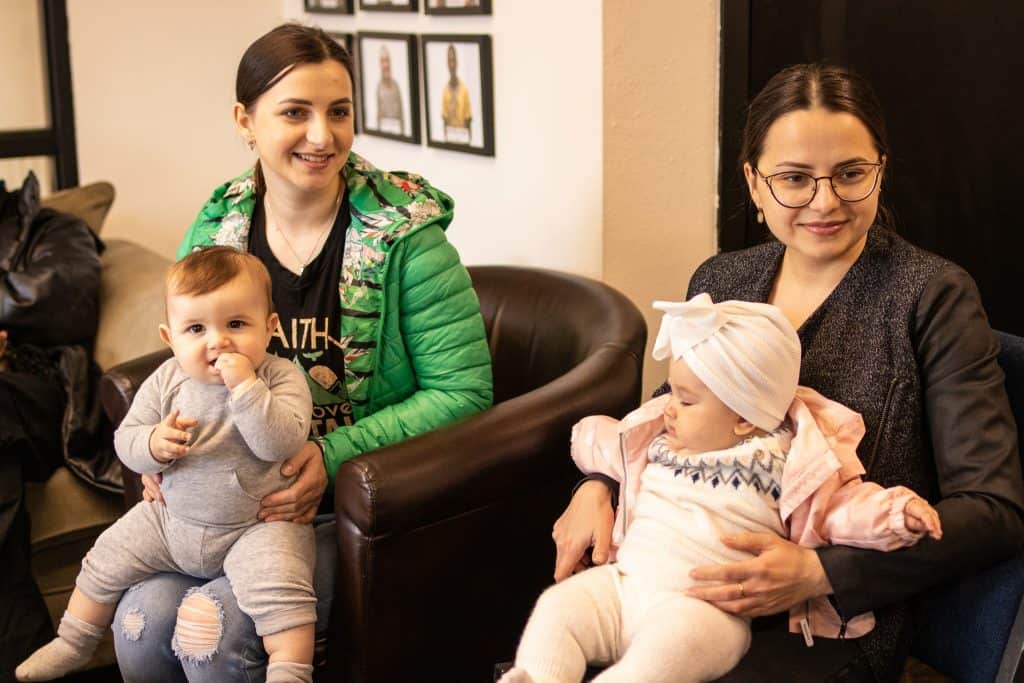
The war in Ukraine was no standalone event — years of political tension and a complicated history foreshadowed the crisis. Russia-Ukraine relations have been generally tense since Ukraine left the Union of Soviet Socialist Republics in 1991. In 2014, Russia capitalized on the political instability of the Ukrainian Revolution. The subsequent ousting of President Viktor Yanukovych allowed Russia to seize Crimea. The war in Ukraine destroyed vital infrastructure and led to many civilian casualties. These factors served as the trigger for the displacement we see today.
Of the 8 million displaced people outside of Ukraine, approximately 5 million have received temporary protection or similar national protection, according to the UNHCR. This means that UNHCR doesn’t legally recognize the majority of Ukrainians as refugees. Thankfully, as the city of Kyiv became safer, the UNHCR was able to repatriate over 4.5 million Ukrainians back to their homes.
Afghanistan
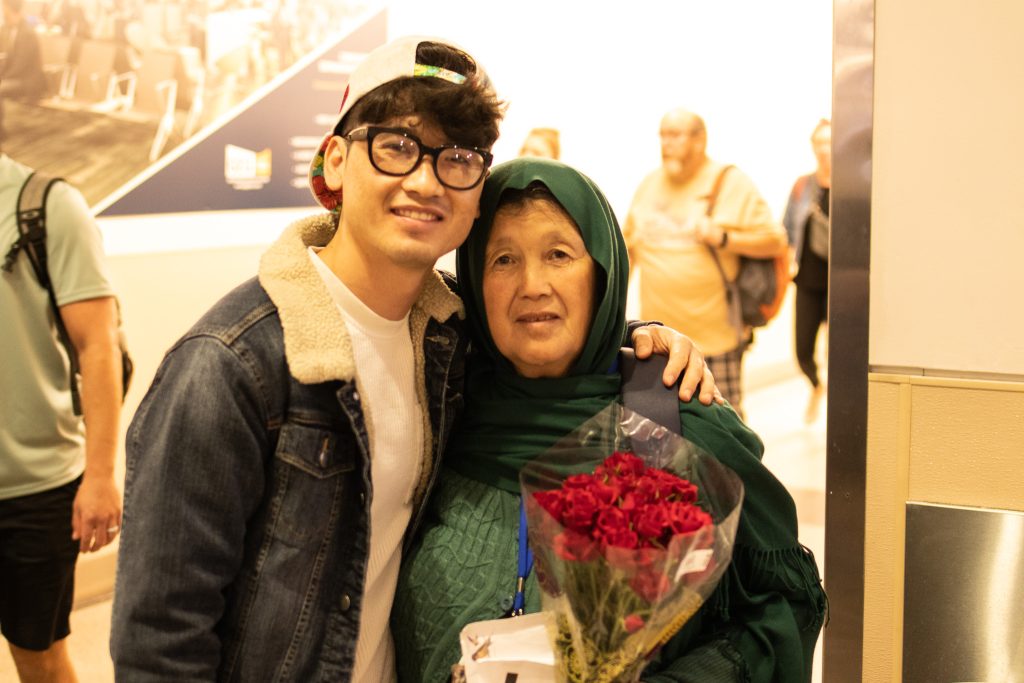
While the recent US withdrawal from Afghanistan in 2021 started the latest displacement crisis in that country, many prior factors had made the region unstable.
Afghanistan’s history is complex, and there are approximately 14 major ethnic groups within the country, leading to a unique system of governance while holds its own tensions.
As well, World Food Programme reports show that over half the population faces food insecurity and acute hunger. Afghanistan is the largest opium producer in the world and therefore faces many issues with drug trafficking and crime. Once the US withdrew and the Taliban again took control of the country, many citizens began to face persecution once more.
World Relief Spokane has been fortunate to support many Afghans throughout the last few years. In this blog post, Ibadullah Rasoli recounts his journey from Kabul to Spokane.
Why are displaced people important to our communities?
What does all of this have to do with us here in the United States? When this hardship takes place so far away from our communities, it seems difficult to understand why it is important that we support displaced people.
Supporting refugees and migrants is integral to American history and culture.
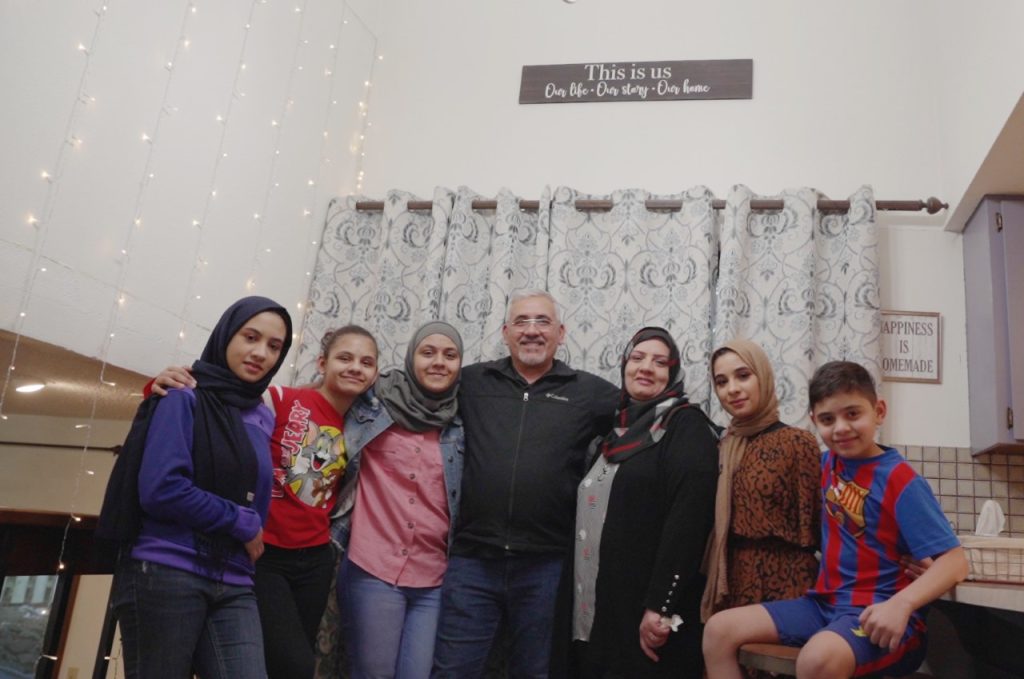
The United States is a country built on immigration. Cross-cultural understanding and collaboration are foundational pieces of American values. Today, approximately 44.8 million migrants live in the United States, making up 13.7% of the population. The United States has resettled over 3 million refugees since the Refugee Act was passed in 1980. Migrants deepen and enrich American culture and its diversity of experience, language, food, and customs. A study by the International Institute of St. Louis shows that refugees help improve cross-cultural understanding. They also help locals appreciate cultural diversity and see the shared values and beliefs across different cultures.
Refugees and migrants support local economies.
In 2017, the U.S. government conducted a study that found that refugee contributions exceed the initial cost of resettlement. From 2004-2015, the government spent $206 billion on refugees. During that period, refugees generated over $269 billion in tax revenue. It’s also important to note that refugees have a strong entrepreneurial spirit. Refugees are twice as likely to start a business than regular taxpayers.
We have a spiritual duty to be in solidarity with the oppressed and marginalized.
Jesus built his ministry on the principle of radical inclusion, of empowerment for the most vulnerable in society. He taught us that to fully capture God’s love, we have a duty to uphold the dignity of such people. Being in touch with God’s love means loving the stranger and the foreigner. Regardless of how far away a suffering community might be, we still have a duty to support them.
He makes sure that orphans and widows are treated fairly; he loves the foreigners who live with our people, and gives them food and clothes. So then, show love for those foreigners, because you were once foreigners in Egypt.” — Deuteronomy 10: 17-19
I was hungry and you gave me food, I was thirsty and you gave me drink, I was a stranger and you welcomed me.– Matthew 25: 35
The end of displacement begins with you.
Here at World Relief, our mission is to support people who have been forcibly displaced. Sometimes that means action in our local community, helping refugees adjust to life in America, teaching them how to use the bus system, or finding them work. Sometimes that means tackling poverty or malnutrition abroad and stopping displacement at the source.
World Relief relies on the generosity of its donors and volunteers. For World Refugee Day, please consider supporting our efforts.

Antoine Herrbach is a 2023 Summer Intern for World Relief. He is a Senior at Gonzaga University, studying Political Science, History, and Economics.
“World Relief Cup” Raises Support for Refugee Resettlement Services
In recognition of World Refugee month in June, World Relief Western Washington is hosting the inaugural World Relief Cup soccer tournament to celebrate the resilience and contributions of local refugees.
The tournament begins at 9 a.m. and the championship games occur at 6:00 p.m. The final awards ceremony and celebration will take place at 7:30 p.m. Individuals and teams can raise support for refugees rebuilding their lives in Western Washington by registering to participate in the tournament or by sponsoring participants.
Saturday, June 10 at Valley Ridge Fields
“As we celebrate the resiliency and courage of those who have been forced to flee their home country, The World Relief Cup event will open up opportunities for different communities to come together,” said Medard Ngueita, the Executive Director of World Relief Western Washington.
“We hope the event will provide an opportunity to not only celebrate together, but to help raise awareness around mass displacement and the need for better integration of our new neighbors.”
Through the World Relief Cup, the Western Washington offices of World Relief aim to increase awareness of the challenges refugees face in the resettlement process and provide support that empowers them to rebuild their lives in their new community. The event will include competitive soccer tournaments, as well as booths, food trucks, and other fun activities that will be open to the community.
“Refugees are our friends and neighbors, and we encourage this community to embrace them as such.”
said Annie Frisbie, Director of Strategic Advancement, World Relief Western Washington.
By offering our support to these new community members as they acclimate and seek to rebuild their lives here in Western Washington, we treat them with the dignity and respect they deserve as individuals made in the image of God.”
Community members are encouraged to participate in the World Relief Cup by volunteering to help with the event, signing up to play with a team, or sponsoring teams or individuals who are participating in the tournament. To register for this event as a team or individual, please visit the World Relief Western Washington events page and reserve a spot: https://worldrelief.org/world-relief-cup
Thurston County Hosts “From Home to Home” Refugee Resettlement Simulation Event
In recognition of the thousands of refugees who are forcibly displaced from their home countries each year, the Thurston County office of World Relief is hosting “From Home to Home” – an experiential exhibit demonstrating the challenges these refugees face when coming to the United States. The event will take place in Olympia on May 19 – May 22, with sessions available both for groups and individuals from 8:00 a.m. to 7:00 p.m. at 812 Central St SE. Sessions in the exhibit will simulate the common decisions and difficulties refugees and asylum seekers face on their journey to resettlement.
“Refugees and asylum seekers who are forcibly displaced from their homes have experienced challenges and dangers that many of us cannot begin to comprehend,” said Annie Frisbie, Director of Strategic Advancement. “Through this exhibit, we hope to create awareness of both the trauma of displacement and the difficulties they endure on their journey to the United States. By doing so, we can better work together as a community to ensure those who have experienced such difficulty can find support in Thurston County.”
Through this exhibit, the Thurston County office of World Relief is aiming to increase understanding of the unique vulnerabilities of refugees and asylum seekers who have been forcibly displaced and highlight the need to assist them in rebuilding their lives in the United States. This exhibit to increase awareness is coupled with the office’s continuing work serving displaced individuals in Western Washington by assisting them in securing safe housing and providing cultural orientation services.
“Refugees and asylum seekers need our support to both navigate an unfamiliar culture and an uncertain future in their new homes,” said Annie Frisbie. “They have suffered significant challenges before and during their journey here, but our community has an opportunity to demonstrate God’s love for them by welcoming them with open arms and helping to ease their transition to rebuilding lives in the United States.”
Schools, local businesses, first responders, faith groups, and individuals are all encouraged to participate in the exhibit. To register for this event as a group or an individual, please visit the World Relief Western Washington “From Home to Home” events page and reserve a spot: https://worldrelief.org/from-home-to-home
Was Jesus a Refugee?
“Jesus Was a Refugee.” Recently, I’ve seen that message all over — on billboards, TV ads, on t-shirts, debated on social media and beyond. Much of this messaging is part of a broader campaign called He Gets Us that aims to help people recognize that Jesus was a human being who can identify with us in our humanity.
That’s a powerful reality for the more than 32 million refugees in our world today, a number unprecedented in recorded history. Jesus “gets” them because, early in his human experience, the Gospel of Matthew tells us that he was forced to flee the threat of Herod’s persecution. He was carried by Joseph and Mary to Egypt, beyond Herod’s dominion, where they would be safe from the genocide inflicted by a jealous ruler on the little boys of Bethlehem.
Many of today’s 32 million refugees know viscerally what it means to awaken in the middle of the night and to flee with what little they could carry, as an angel instructed Joseph to do. To feel danger just behind them. To complete a grueling journey only to arrive in a new land and a new culture with the ongoing grief of the loss of one’s homeland. Jesus presumably lived all of that in his fully human flesh as a small child. And millions today find solace in that reality. He gets them.
But was Jesus really a refugee?
We now have formal legal definitions for the term “refugee” in both U.S. and international law: refugees are those outside of their countries of origin who are unable or unwilling to return because of a well-founded fear of persecution on account of their race, religion, political opinion, nationality or membership in a particular social group. But, of course, these definitions did not exist when the holy family made their journey.
Some, especially on social media, have vehemently insisted that Jesus was not a refugee — perhaps defensive at the implication that their preferred refugee and immigration policies to keep most, if not all, refugees out might actually have harmed the incarnate God.
But while it is clear from the biblical text that Jesus was displaced by a credible threat of persecution, it’s fair to ask just how he would fare under our contemporary policies — as theologian Glenn Butner Jr. does in a new book, Jesus the Refugee: Ancient Injustice and Modern Solidarity.
Butner argues that Jesus largely satisfies the contemporary legal definition of a refugee, but it’s debatable whether the journey to Egypt took him “outside of his country of origin,” since Egypt and Bethlehem were both part of the Roman Empire. Perhaps it’s more precise to characterize the holy family as “Internally Displaced Persons” — those, including more than 60 million people in our world today, who have been forced to flee their homes but remain within the boundaries of their countries.
Would Jesus have faced the barriers many families fleeing persecution face today?
Perhaps Jesus was actually an asylum seeker: asylum seekers profess to meet the definition of a refugee. They say that they’re afraid of persecution on account of one of the enumerated grounds — but they’re not ensured protection under the law unless and until they have demonstrated (to the satisfaction of the governing authorities of the country where they hope to find refuge) that they indeed qualify. Sometimes they lack documentary evidence of the credibility of their fear. Would Joseph have cited an angelic message as his evidence that persecution was likely for little boys in Bethlehem? Would that have satisfied an Egyptian immigration judge?
Fortunately for our Lord and Savior and his earthly parents, there’s no evidence in the biblical text that they faced any barriers to finding refuge in Egypt. But the Gospel of Matthew gives us very few details about their experience there. We’re left to speculate: were they welcomed, seen as a potential threat or simply ignored? Did Jesus learn to speak his first words with a different accent than his parents? Did Joseph easily find work, or was he told that he would be “stealing” a job from an Egyptian carpenter?
Decades later, in one of his final sermons before his crucifixion, Jesus commends certain individuals for having welcomed him when he was a stranger. The disciples are confused: “When did we see you a stranger and invite you in, or needing clothes and clothe you?” (Matthew 25:38). They did so, Jesus says, when they welcomed one of “the least of these brothers and sisters of mine” (Matthew 25:40). Jesus identifies himself perpetually with the vulnerable and the stranger — which, at least early in his life, he himself was.
Does Jesus’ story shape how we respond to refugees and other immigrants?
Whether Jesus would satisfy the precise legal definition of a refugee or not, what’s clear for those of us who profess to follow him today is that an unprecedented crisis of forced migration — with more than 100 million people forced from their homes, experiencing displacement similar to what Jesus experienced as a child — presents an unprecedented opportunity to demonstrate love for Jesus himself.
At World Relief, it’s our great privilege to partner with local churches both across the United States and in various other parts of the world to welcome and care for refugees and others who have been displaced. From our U.S. refugee resettlement program’s foundations in the 1970s, we — and the tens of thousands of church-based volunteers who have partnered with us — have resettled more than 300,000 individuals, motivated by Jesus’ challenging words in Matthew 25. As Evelyn Mangham, the cofounder of World Relief’s refugee resettlement program said, the Christian response to an unprecedented global refugee crisis is “simple”:
“Respond to what Jesus said, that’s all: ‘I was hungry, and you gave me something to eat. I was thirsty and you gave me something to drink. I was a stranger’ — refugee — ‘and you took me in… Inasmuch as you did unto of the least of these my brethren, you did unto me.’ It’s simple obedience.”
Are you ready to create a more welcoming and just world for refugees and other vulnerable immigrants? Learn how you can join us today.

Myal Greene has a deep desire to see churches worldwide equipped, empowered, and engaged in meeting the needs of vulnerable families in their communities. In 2021, he became President and CEO after serving for fourteen years with the organization. While living in Rwanda for eight years, he developed World Relief’s innovative church-based programming model that is currently used in nine countries. He also spent six years in leadership roles within the international programs division. He has previous experience working with the U.S. Government. He holds B.S. in Finance from Lehigh University and an M.A. from Fuller Theological Seminary in Global Leadership. He and his wife Sharon and have three children.
9 Things You Need to Know About Private Sponsorship
This blog was updated on June 21, 2023.
On January 19th, the Biden Administration announced a new private sponsorship program for refugees called The Welcome Corps. Through the Welcome Corps, everyday Americans can directly sponsor refugees who are being resettled in the U.S.
Since this blog was first published, the Welcome Corps has designated World Relief as an official Private Sponsorship Organization, opening new opportunities for us to equip Americans sponsoring refugees outside the current geographic locations of our U.S. offices.
Today, there are an estimated 103 million displaced people globally, including 32.5 million refugees. Forced from their homes and separated from support networks, refugees are among the world’s most vulnerable populations.
At World Relief, we know you want to live out Jesus’ call to welcome the stranger and care for those experiencing vulnerability. Private sponsorship builds on World Relief’s existing opportunities that engage local communities in welcoming newcomers and is one more way you can answer that call. Here are 9 things you should know about private sponsorship and how you can get involved.
1. What is the Welcome Corps?
The Welcome Corps is a new private sponsorship program from the U.S. government that allows groups to sponsor and resettle refugees. Sponsors will play a key role in welcoming, supporting and assisting refugees as they rebuild their lives in the U.S. and integrate into their new communities.
2. How do I become a sponsor?
Becoming a private sponsor is a multi-step process that includes forming a group of five or more individuals, submitting an application, background checks, demonstrating sufficient financial resources and more. Currently, private sponsors can apply to be matched with someone in need of sponsorship. The U.S. government is also working to roll out an option for people to sponsor specific individuals they already know who are in need of resettlement from another country.
Those interested in partnering with World Relief in private sponsorship can fill out the form below to receive more information. All Private Sponsorship Groups will be required to go through the Welcome Corps’ application and vetting process, which you can begin at any time on the Welcome Corps website.
3. Who is eligible for resettlement through the Welcome Corps?
This new program will be implemented in two phases. In its first year, the Welcome Corps’ goal is to mobilize at least 10,000 Americans to welcome refugees primarily from countries in Sub-Saharan Africa, and then scale up to make the program an enduring feature of the refugee resettlement system.
In the second phase of the program (which is not yet active), private sponsorship groups will be able to identify specific refugees whom they wish to sponsor. For more information on eligibility, visit the Welcome Corps website.
4. If I become a sponsor, what will I do?
Sponsors assume responsibility for initial resettlement services, providing financial and other forms of support as required by the refugee resettlement process. Some examples of non-material support include:
- Meeting the refugee(s) upon arrival in the United States and transporting them to initial housing
- Ensuring that the sponsee has safe and appropriate housing and basic necessities
- Ensuring that the sponsee’s healthcare and medical needs are met for the duration of the resettlement period
- As appropriate, helping the sponsee complete the necessary paperwork for employment authorization, a Social Security card and for any other public benefits for which they may be eligible
- As appropriate, assisting the sponsee with accessing education, learning English and enrolling children in school
- Supporting employable sponsees in securing employment in the U.S. workforce
- Ensuring appropriate interpretation/translation
- Providing cultural and community orientations
For more information on the sponsorship process and what’s required of sponsors, visit the Welcome Corps website.
5. Is private sponsorship good for refugees?
Private sponsorship opens more pathways for more people fleeing persecution to rebuild their lives and thrive. At World Relief, we applaud the expansion of sustainable, lawful opportunities for those fleeing persecution to find safety in the U.S.
Navigating the process of private sponsorship can also come with challenges for both sponsors and refugees. But you don’t have to face them alone.
At World Relief, we have decades of experience working with refugees and displaced populations across the globe through our various local community sponsorship and volunteer programs. We utilize this experience to equip churches and passionate people like you to walk alongside those who choose to welcome newcomers and the newcomers they are matched with.
If you are interested in private sponsorship or connecting with one of our U.S. locations, and would like to receive updates on how World Relief can support you in the process, please sign up here. In addition, we will send you a free code for our eLearning course “Navigating Friendships” which will help you learn how to build empowering, long-lasting friendships with those from different cultures.
6. Has private sponsorship been done elsewhere?
Yes! Private sponsorship has been a successful piece of refugee resettlement efforts in countries like Canada and Australia, and versions of private sponsorship have even been part of U.S. refugee resettlement historically. Most recently, the U.S. has re-engaged private sponsorship models to resettle people from Afghanistan, Ukraine, Venezuela, Haiti, Nicaragua and Cuba. This new program goes beyond existing private sponsorship programs providing a pathway to resettle refugees from around the world.
7. What about traditional pathways to refugee resettlement? Will refugees continue to be resettled by World Relief and other agencies?
Yes! The U.S. federal refugee resettlement program will continue to operate and World Relief will continue to offer various ways for churches and individuals to engage in welcoming refugees and other immigrants in vulnerable situations. Private sponsorship will complement the work already being done by organizations like World Relief, allowing more people fleeing persecution to find safety in the U.S.
8. Is World Relief assisting with private sponsorship?
On June 13, the Welcome Corps announced World Relief as an officially designated Private Sponsorship Organization. This will allow us to use our decades of experience and expertise to equip even more church and community groups who are eager to extend welcome outside the geographic locations of our U.S. offices. We will also continue to provide other community sponsorship opportunities — such as our Good Neighbor Team program — through our local U.S. office locations.
What’s more, we have resources already available to serve both sponsors and those being sponsored. The World Relief Workshop is our e-learning platform designed to equip individuals, groups and churches to best serve their refugee neighbors — from courses on navigating common barriers to ESL tutoring. Many of our U.S. offices are also able to offer services to sponsees such as English classes and immigration legal services.
*To receive updates on World Relief’s involvement with private sponsorship + a free Workshop course, sign up here.
9. I’m not ready to become a private sponsor. Is there anything else I can do?
Yes! As mentioned, World Relief works with refugees and displaced people in the U.S. and all over the world and offers the opportunity to welcome and walk alongside refugees and other immigrants through local volunteer and sponsorship programs.
You can support this work by volunteering at a local office in your area or making a donation to World Relief. Your gift will allow us to provide job training, legal support and more for immigrants and refugees in the U.S. as well as respond to the needs of people in places like Ukraine, South Sudan and DR Congo. Together, we can extend welcome and address the root challenges that lead to displacement in the first place.
Resiliency & Hope in the Midst of Persecution
Fleeing Persecution in Cambodia
When Sithy and his wife, Saobot, arrived in the United States in March of 2022, he was not sure what his life would look like. He had been rejected, persecuted, and imprisoned for his political affiliation in Cambodia.
Both Sithy and Saobot’s siblings and other family members remain in Cambodia. While they do not have any relatives here in the United States, they have already found solace in his neighbors – both those who partner with World Relief Triad and the Cambodian community that surrounds them.
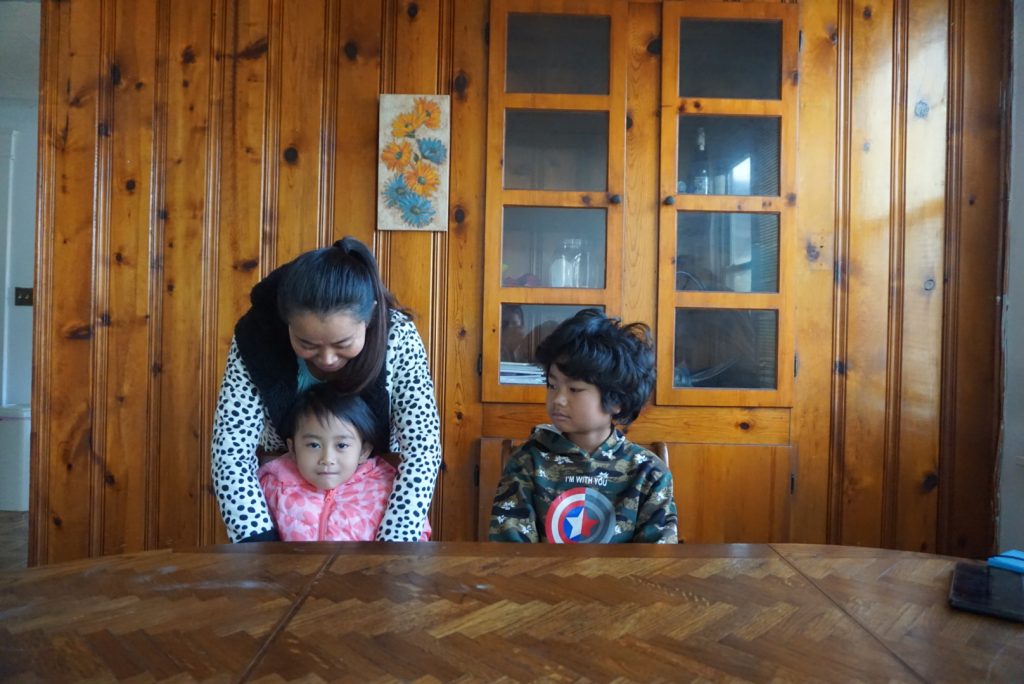
“My friends from the Cambodian community know my story of why I’m an immigrant,” Sithy says. “I’m a refugee because of political issues. When I was in Cambodia, I was captured and put in prison. They were pressuring me to live there. After I fled to Thailand, people followed me and tried to capture and kill me.”
He recalls the way that it felt to finally be in Thailand but not in full safety yet. “When I left Cambodia, I didn’t have any hope,” Sithy says.
“When I was leaving Thailand, I had even less hope. I felt like I was floating in the middle of the sea.”
Finally, when Sithy arrived in the United States with his wife and children, he gained a hope that he had never thought possible. “Right now, I’m happy,” he says. “I have freedom with the hope that I live in a democratic country like the United States.”
Life After Arriving in the U.S.
It is no wonder that Sithy “hit the ground running” once he finally was able to begin his life in the United States. Within weeks of adjusting to his new home, Sithy began working for two different people. He also received some extra funding from World Relief which covered some of his rent and utilities easing the burden of housing costs.
With the money saved, combined with the money given to him by friends in the local Cambodian community, Sithy was able to pay for his first car. Now that Sithy has hope and stability in his life here in the Triad, he has already begun to make plans for his family.
“For myself, I need to find permanent work,” he says. “I know I will have help from World Relief and the community in the process of finding the right job for myself and my wife. I want her to continue her studies, and I plan to try and meet the GED requirements because the certificate I have from Cambodia isn’t eligible here without a high school degree.”
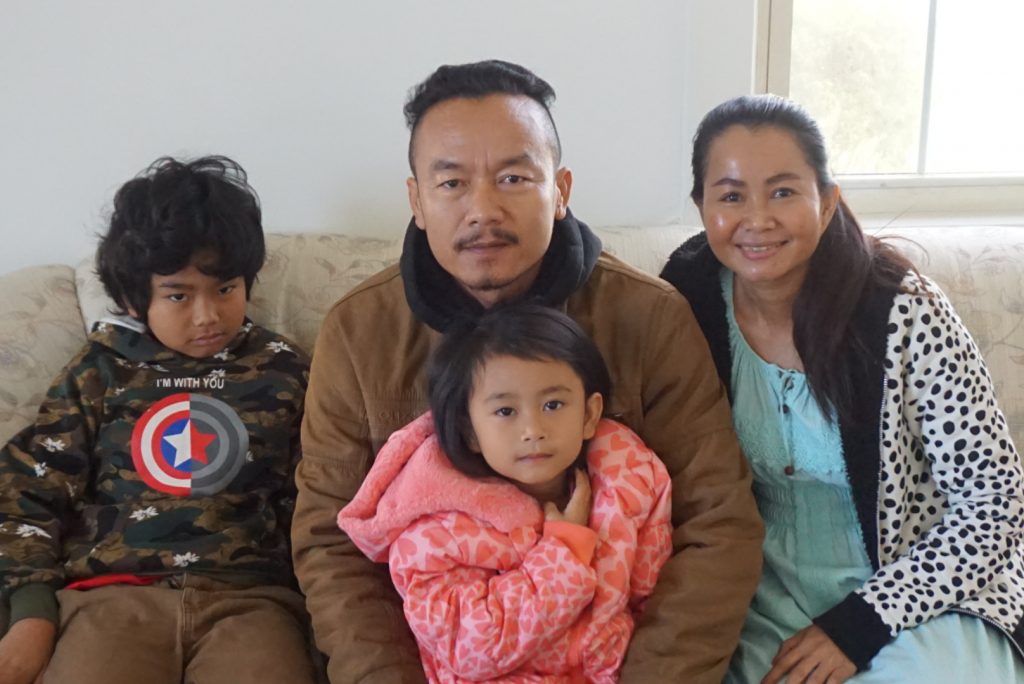
Sithy can now use his own car to transport himself and his wife to various ESL classes, personal appointments, and eventually their future places of employment! Because of supporters like you, World Relief Triad was able to ease housing costs through locally raised funds, giving newcomers like Sithy the ability to pay for and provide his own transportation for himself and his family.
Let’s Go Together for Those Who Have Yet to Come
Over the past two years, our office has faced many challenges. In the midst of a global pandemic, a new administration led to a large influx of arrivals which forced our office to ramp up in staff members, an ongoing war in Ukraine, and the fall of Kabul which ultimately led to thousands of Afghans being forced to flee their home country. Yet, our community remained to be a sanctuary for the displaced.
We invite you to join us as we cast a new vision, together, as we go forward into the reality of an uncertain future. When you give today, you join World Relief Triad in going further than we’ve ever previously dreamt possible.
Together, we can welcome more, like Sithy and Saobot, into a world of restored hope, peace, security and joy.
Private Sponsorship Opens Path for Venezuelans: Here’s What You Need to Know
Currently, Venezuela has the highest crime rate of any country in the world due to a corrupt and oppressive government, unchecked violence, high unemployment and chronic food and medicine shortages. This humanitarian crisis has forced over 7 million Venezuelans to flee their country, making it one of the highest external displacement crises globally.
At World Relief, we know that you care about the most vulnerable and want to compassionately live out Jesus’ call to welcome the stranger with actionable steps.
The Biden Administration has released a new Venezuelan Sponsorship program giving up to 24,000 Venezuelans a chance to start a new life in the U.S. with the support of an American sponsor. The Process for Venezuelans (P4V) is a pathway that will provide safety and refuge in the U.S.
Matthew Soerens, the U.S. Director for Church Mobilization and Advocacy at World Relief shares 6 things you need to know about the new program and how it serves our Venezuelan brothers and sisters.
This blog post speaks specifically to sponsorship opportunities for Venezuelans. If you’re looking for information about Welcome Corp and sponsoring refugees from other parts of the world, check out our other Q&A here.
If you have a friend or family member in Venezuela that you would like to sponsor, learn more and start your sponsorship application below here.
6 Things You Need To Know
1. Why was a new parole program for Venezuelans created?
The goal of a parole program is to allow a limited number of Venezuelans who meet certain criteria and already have sponsors able to help support them within the U.S., the opportunity to be approved for parole in the U.S. before they make the dangerous journey to the U.S. border to seek asylum.
More than 7 million people have fled Venezuela since 2015 due to an ongoing political and economic crisis. The vast majority of these individuals are living in neighboring countries as refugees while many others have come to the United States either on temporary visas or seeking asylum at the U.S.-Mexico border.
In the last few months, the number of Venezuelans who have arrived at the U.S. border has dramatically increased, stretching the U.S. government’s capacity to process asylum requests. Many Venezuelans are likely to win their asylum requests, but the wait time for an asylum decision can stretch on for many years.
In the last fiscal year, approximately 77% of asylum decisions by U.S. immigration judges were to grant asylum, meaning the applicants had demonstrated a credible fear of persecution in Venezuela. But the wait time for an asylum decision can stretch for many years due to the limited capacity of the U.S. government.
Whatsmore, the U.S. government does not recognize the current government Venezuelan administration as a legitimate leader; without formal diplomatic relations, it is very difficult to carry out removal orders for Venezuelans who do not qualify to stay permanently in the United States.
A parole program can speed up the resettlement process and help many Venezuelans avoid the dangerous land journey to the U.S. border, while also easing some of the capacity restraints the U.S. government is facing in processing asylum cases.
2. What does the new program do?
Essentially, the new parole program allows certain Venezuelan nationals who have someone willing to serve as their sponsor within the U.S. to petition on their behalf, so that they can be lawfully brought to the U.S.
It was announced concurrently with new restrictions on Venezuelans who arrive at the U.S.-Mexico border seeking asylum. Most Venezuelans who arrive at the border are now being returned to Mexico.
3. Is this a good policy?
For individuals who can secure a sponsor and have the requisite documents to travel to the United States, this parole program could be a lifeline. We are always encouraged by the expansion of lawful opportunities for those fleeing persecution to find safety in the U.S.
However, we would prefer that the U.S. bring in more Venezuelans not through parole, but with formal refugee status, which would allow them immediate employment authorization, access to resettlement support and a clear process to apply for permanent legal status and eventual citizenship. Parolees are only allowed in on a temporary basis.
We are also deeply concerned by the decision to pair this new parole program with a restriction of due process rights for Venezuelans who reach the U.S. border and wish to request asylum. U.S. law permits anyone facing persecution to seek asylum.
The Biden administration is now returning people to Mexico without being given the opportunity to request asylum under the dubious legal authority of Title 42 — a public health emergency law invoked in light of the COVID-19 pandemic that, nearly three years after the COVID pandemic began, is being misused to restrict access to asylum.
4. If I know someone in Venezuela who wants to come to the U.S., how can I help them?
The process for sponsoring a Venezuelan is operated by United States Citizenship and Immigration Services (USCIS) and explained on their website.
5. I don’t know anyone in Venezuela, but I want to help. What can I do?
Our partners at Welcome.US have a registration form for potential sponsors of Venezuelans. Please note that World Relief does not operate this connection process.
6. What is World Relief doing to help?
While Venezuelans arriving under the new parole program will not have permanent legal status or access to governmentally-funded refugee resettlement benefits, World Relief partners with local churches to meet as many needs as we are able.
Many of our offices provide accredited immigration legal services, which could include helping qualifying individuals apply for Employment Authorization and/or help them understand their options for pursuing long-term legal status.
Some of our offices offer English classes or other support services, which may be available to Venezuelan parolees. We’re also continually advocating for a more robust welcome for Venezuelans and others who have had to flee persecution and hardship in their homelands, including a rebuilt refugee resettlement program that would ensure Venezuelans would arrive.
Want to do more? Take the next step and join The Path. For nearly 80 years, World Relief has been fighting injustice and helping those who need it most. Pathmakers make this work possible, and you can join them.











